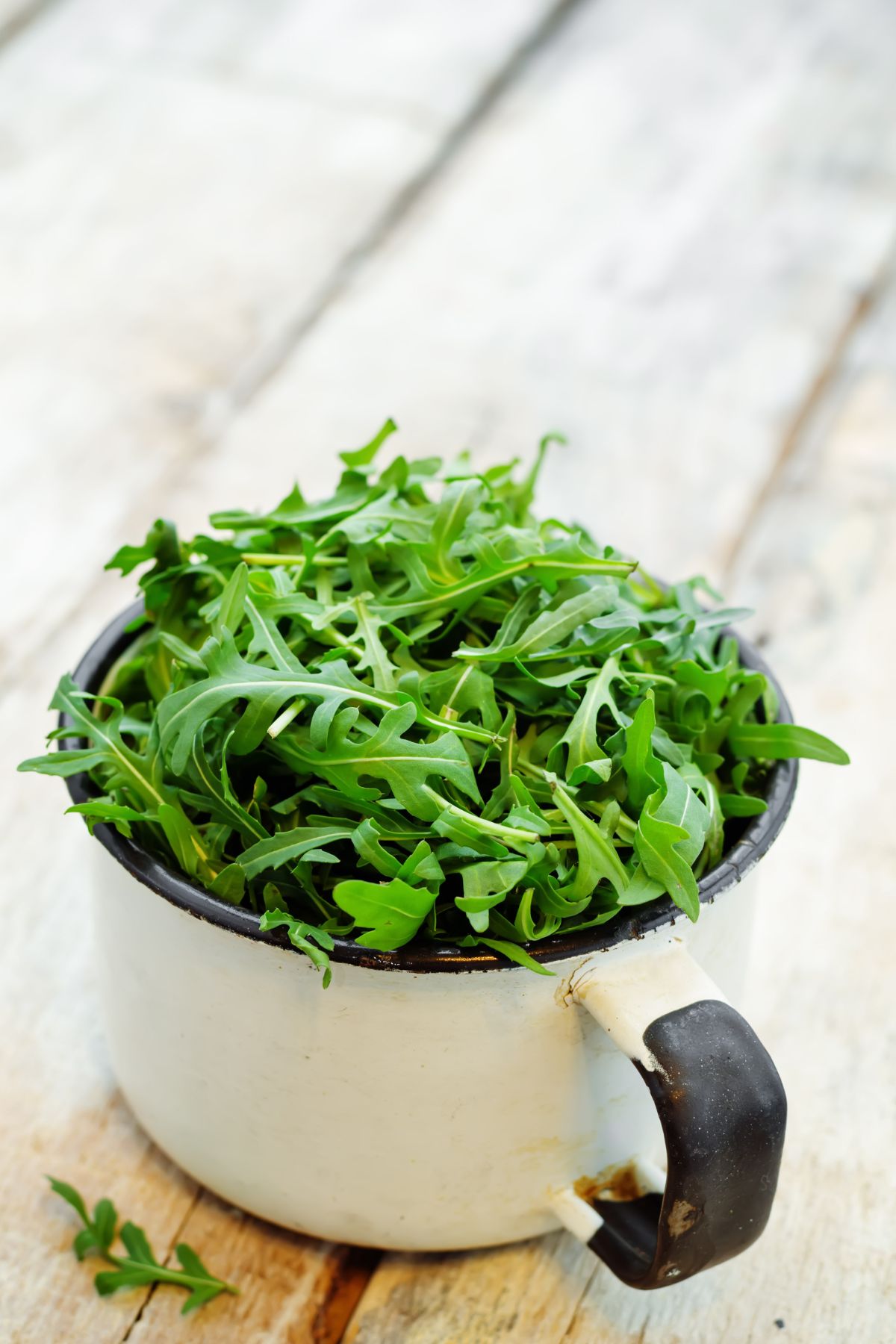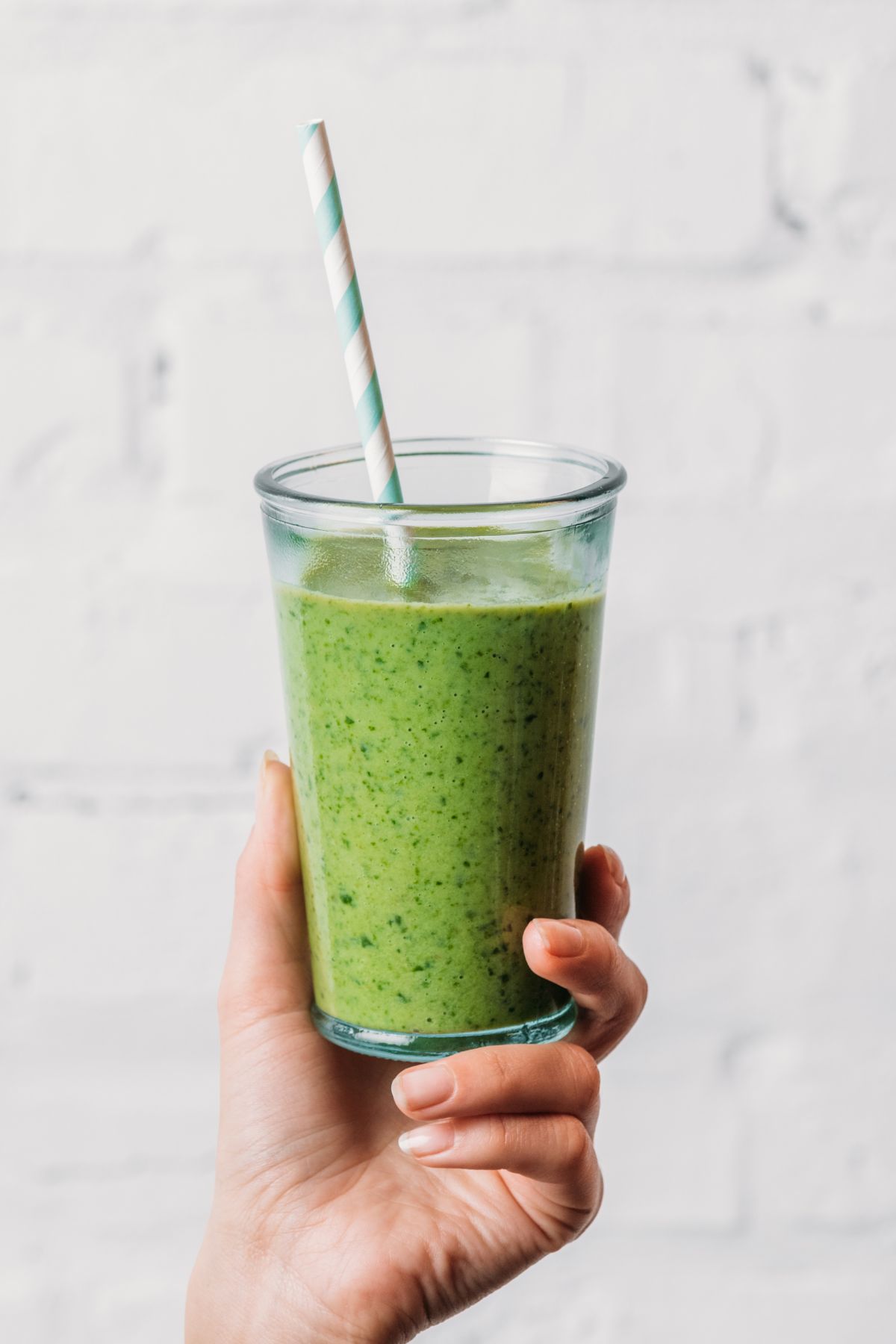Is arugula low FODMAP? Understanding the impact of FODMAPs on digestive health is crucial for anyone looking to alleviate symptoms such as bloating, gas, and abdominal pain. Arugula, also known as rocket, roquette, rugula, or rucola, is a leafy green vegetable that’s spicy and peppery in flavor, making it a popular choice for salads and various cooking applications. This blog post aims to explore and clarify the relationship between arugula and the low FODMAP diet, providing insights into how this dark green vegetable fits into a dietary strategy designed to reduce digestive discomfort.

Find out whether pineapple, almonds, celery, olives, coffee, beets, mushrooms, and peanut butter are FODMAP-friendly.
Table of Contents
FODMAPs stands for fermentable oligosaccharides, disaccharides, monosaccharides, and polyols. These are short-chain carbohydrates that the small intestine does not absorb well and which the gut bacteria can ferment. This fermentation process can lead to the production of gas and attract water into the colon, which, for people with Irritable Bowel Syndrome (IBS) and similar gastrointestinal disorders, can cause significant digestive discomfort, including bloating, gas, and abdominal pain.
A low-FODMAP diet involves a temporary reduction of high-FODMAP foods, followed by a strategic reintroduction phase to identify personal triggers. This diet is well known for its ability to aid in the management of IBS symptoms and enhance quality of life for those who suffer from these digestive problems. Understanding which foods are low or high in FODMAPs is essential for navigating this diet effectively.
Health Benefits Of Arugula
Arugula, also known as rocket, roquette, rugula, or rucola, is a leafy green vegetable that’s not only distinctive for its spicy, peppery flavor but also for its impressive array of health benefits. Here are some of the key health benefits of including arugula in your diet:
- Nutrient-Rich: Arugula is low in calories but high in essential nutrients, including vitamin K, which is vital for bone health and blood clotting; vitamins A and C, powerful antioxidants that help protect the body against free radical damage; and folate, important for DNA synthesis and repair.
- High in Antioxidants: Arugula contains several compounds with antioxidant properties, such as glucosinolates and sulforaphane, which are believed to help protect against certain types of cancer by neutralizing harmful free radicals in the body.
- Supports Bone Health: The high levels of vitamin K in arugula are crucial for maintaining strong, healthy bones and may help prevent osteoporosis.
- Promotes Heart Health: Arugula contains dietary nitrates, which have been shown to lower blood pressure, reduce arterial stiffness, and improve overall cardiovascular health.
- Improves Digestion: The dietary fiber in arugula helps promote healthy bowel movements and prevents constipation, contributing to a healthy digestive system.
- Detoxifies the Body: The chlorophyll present in arugula has been linked to detoxifying properties, helping to eliminate toxins from the body.
- Supports Healthy Vision: Vitamin A in arugula is essential for maintaining healthy eyes and can help prevent age-related macular degeneration.
- Anti-inflammatory Properties: Arugula contains compounds that have anti-inflammatory effects, which can help reduce the risk of chronic diseases such as heart disease and diabetes.
- Supports Healthy Skin: The antioxidants and vitamins A and C in arugula can help promote healthy skin by preventing oxidative damage that leads to signs of aging.

Is Arugula Low FODMAP?
Determining how much arugula is considered low FODMAP is crucial for individuals managing IBS symptoms through diet. A serving of arugula is considered low in FODMAPs and safe for those following this dietary recommendation, according to research by Monash University, the organization behind the low FODMAP diet classification.
Most people with IBS can tolerate a single serving of arugula, which is typically around two cups (or 75 grams). This amount contains negligible amounts of the FODMAPs like fructose, lactose, mannitol, sorbitol, GOS (Galacto-oligosaccharides), and fructan, making it an excellent choice for adding flavor and nutrition to a low-FODMAP diet without risking digestive discomfort.
When choosing arugula for your low-FODMAP diet, opt for fresh, wild types or those you can find in seed catalogs or local markets to ensure you’re getting a product that’s as close to its natural state as possible. Avoid pre-packaged salad mixes that may contain high-FODMAP ingredients or dressings. By selecting and preparing arugula carefully, you can enjoy the benefits of this leafy green without exacerbating IBS symptoms.
Most people with IBS can tolerate a single serving of arugula, which is typically around two cups (or 75 grams).
Incorporating Arugula Into A Low FODMAP Diet
Incorporating arugula into your low-FODMAP diet can add flavor, variety, and essential nutrients without causing additional digestive discomfort. Here are some creative ways, recipes, and meal ideas for maintaining a balanced diet:
- Salads: Mix arugula with other low-FODMAP greens like spinach for a nutritious salad base. Add low-FODMAP toppings such as cucumbers, grapes, and walnuts for crunch and flavor.
- Sandwiches and Wraps: Use arugula as a spicy, peppery green in sandwiches and wraps instead of higher FODMAP lettuce varieties. Pair it with low-FODMAP bread or wrap options.
- Cooked Dishes: Arugula can be lightly sautéed and added to omelets, quiches, or pasta dishes for a nutritional boost and a hint of spice.
- Smoothies: A handful of arugula can be blended into smoothies for a nutrient-rich addition. Combine with low-FODMAP fruits like blueberries or oranges.
Recipes and Meal Ideas
- Arugula Salad with Lemon Vinaigrette: Combine arugula, sliced strawberries, and walnuts. Dress with a simple lemon vinaigrette (lemon juice, garlic-infused olive oil, salt, and pepper).
- Grilled Chicken and Arugula Wrap: Fill a low FODMAP wrap with grilled chicken, arugula, and sliced bell peppers. Use a garlic-infused olive oil as a dressing.
- Pasta with Arugula and Cherry Tomatoes: Toss cooked low FODMAP pasta with arugula, halved cherry tomatoes, olive oil, and grated Parmesan cheese.

Navigating Food Labels: Identifying Low FODMAP Arugula
When incorporating arugula into a low-FODMAP diet, understanding how to read and interpret food labels is crucial, especially if you’re purchasing pre-packaged arugula or arugula-containing products. Here are some tips for navigating food labels and identifying low-FODMAP options:
- Look for Pure Arugula: Ensure that the package contains only arugula with no added ingredients, especially those that might be high in FODMAPs (like onion or garlic powders).
- Check for Dressings and Sauces: Pre-packaged salads that include arugula might also contain dressings or sauces high in FODMAPs. Look for salads without added dressings, or ensure the dressing ingredients are low-FODMAP.
- Beware of Added High FODMAP Ingredients: Some mixed greens or salad blends include high FODMAP ingredients like chicory root (a source of fructans) or added fruits that might be high in FODMAPs. Stick to products that contain only low-FODMAP ingredients.
- Identify Hidden FODMAPs: Ingredients like inulin, soy protein, honey, and others can be high in FODMAPs and might be found in processed arugula products, such as flavored greens or meal kits. Reading ingredients carefully can help avoid these hidden sources.
- Fresh is Best: Whenever possible, opt for fresh arugula over processed products. This minimizes the risk of encountering hidden FODMAPs and ensures you’re getting the most nutritional benefit from your greens.

Is Arugula Low FODMAP: Key Takeaways
Arugula, with its spicy, peppery flavor, is not only safe but also beneficial for those following a low-FODMAP diet to manage IBS symptoms. Here are the key takeaways from our discussion:
- Arugula is considered a low-FODMAP food and can be incorporated into the diet of individuals with IBS in moderation.
- It offers a range of health benefits, including being rich in iron, vitamins A and C, and detoxification enzymes, which support overall health and well-being.
- A serving size of up to two cups (or 75 grams) is generally well tolerated without causing digestive discomfort.
- When incorporating arugula into your diet, it’s important to consider the freshness and purity of the product, avoiding pre-packaged options that might contain high-FODMAP ingredients.
- Reading food labels carefully is crucial for identifying low-FODMAP arugula products and avoiding hidden sources of FODMAPs.
- Are Potatoes Low FODMAP? Adding Spuds Wisely For IBS - March 15, 2024
- Is Watermelon Low FODMAP? Tips for Eating With IBS - March 13, 2024
- Are Blueberries Low FODMAP? Discover The Digestive Benefits - March 12, 2024
